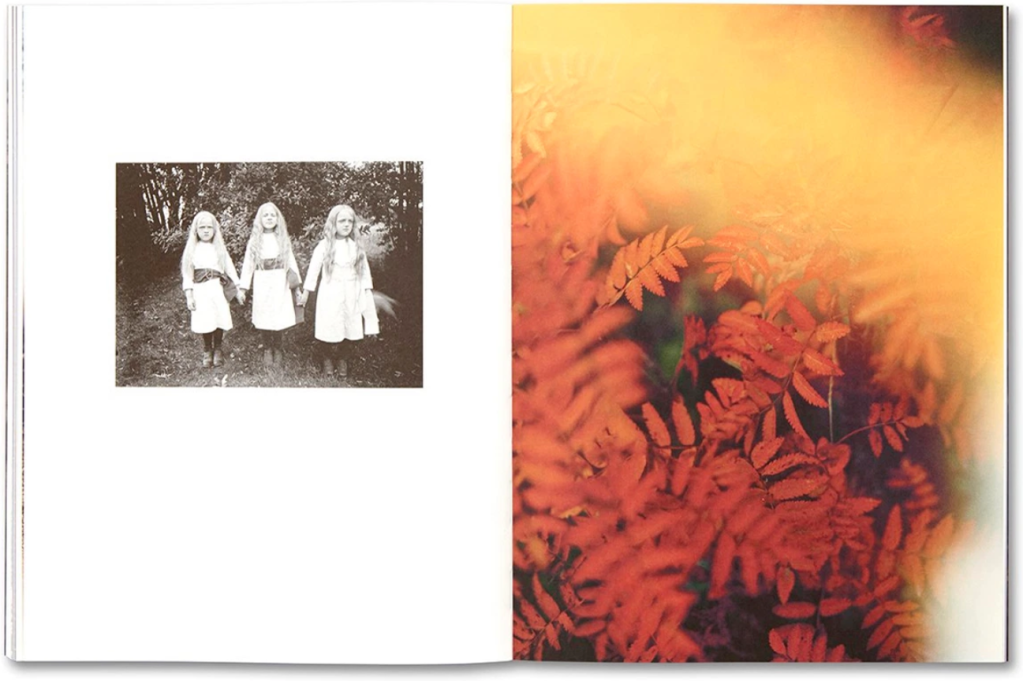As one of the main themes in my body of work and dissertation is heteroglossia, I thought it would be helpful to provide a few photographic examples of this concept that I have been researching for the past two years and how it is evident in photography.
Definition of heteroglossia: two or more voices expressing their own distinct points of view, meanings and values revealing differences in social, professional, gender, cultural or age groupings. It is helpful to remember that heteroglossia can take place across time as well.
Jack Latham – Sugar Paper Theories
Pairs his images with text by Professor Gísli Guðjónsson CBE, a London-based, Icelandic world expert in ‘memory distrust syndrome’ = collaboration and two distinctive voices. One from a photographer’s point of view, the other from a forensic science point of view creates a certain tension in the work. The foreword is written by one of the accused, which adds another voice and perspective to the work. Various diary extracts from other accused also adds another layer of perspective. Latham makes use of historical newspaper clippings thereby adding another heteroglossic layer of time.
Alec Soth – Sleeping by the Mississippi
Soth recognises that photography is a language, full of dialects. The heteroglossia in this work arises from the gazes of the variety of subjects looking back at the viewer, the objects they are showing, murals on walls, the allusions to different life styles as well as the two essay which accompany in the book.
John Angerson – On This Day
Pairs photographs’ locations where historical events took place with an archival photograph or artifact from the same period to create the connection with the past. The archival images and other artifacts were created by other people in the past from their distinctive points of view. On his website the accompanying text only comes up as a rollover, which is superimposed over the lower half of the images. This adds another voice to the work.

Cambridge, England.
Room 103 at the Austin Wing, Cavendish Laboratory. Cambridge University. The actual room in which James Watson and Francis Crick discovered the double helix structure of DNA.
Archive image: Photo 51 a X-ray diffraction image of crystallized DNA taken by Raymond Gosling working as a PhD student under the supervision of Rosalind Franklin. It was critical evidence in identifying the structure of DNA.
Photograph courtesy: King’s College London, UK.
Rick Schatzberg – The Boys
Contextualised in my Dissertation. Different points of view from photographs taken by his friends (vintage snapshots) and short essays written by each member of the group. Juxtaposed contemporary portraits taken by Schatzberg with vintage snapshot of the youthful individual. Vintage snapshots = utterances; photographer’s authorial voice is evident throughout the body of work.
Maja Daniels – Elf Dalia
Juxtaposes and/or intersperses her photos with those of Tenn Lars Perrson who also took photographs of the Elf Dalia region of northern Sweden a century ago. Her work is in dialogue with that of Perrson, as well as through time.
Bibliography
Angerson, J. (2019) On This Day. At: https://www.johnangerson.com/on-this-day/ (Accessed 24/08/2022).
Daniels, M. (2019) Elf Dalia. At: https://majadaniels.com/elf-dalia-book/ (Accessed 24/08/2022).
Latham, J. (2017) Sugar Paper Theories. At: https://www.jacklatham.com/project/sugar-paper-theories/mwq1qn15us1wvn9py3utnajb4nap1u (Accessed 10/03/2020).
Schatzberg, R. (2020) The Boys. (1st ed.) S.l.: powerHouse Books.
Soth, A. (2017) Sleeping by the Mississippi. At: https://alecsoth.com/photography/projects/sleeping-by-the-mississippi (Accessed 26/02/2021).






